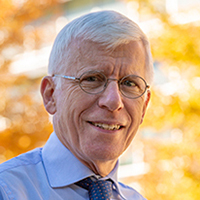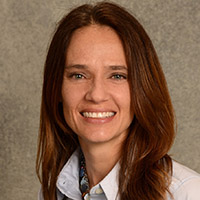By creating a rapt worldwide audience at a time of worry, COVID-19 brought out the worst in fake health news. Misinformation clogged the airwaves, with claims of microchipped vaccines, dangerous miracle cures and mask-mandate conspiracies plastering TV stations and social media platforms.
Today, pandemic “news” has abated. But misinformation has not.
In a nation engrossed in screentime and flashy news bites, age-old medical quackery has entered a whole new dimension. The sheer volume of misinformation coupled with today’s technology for spreading it creates the potential to cut the truth right out of a person’s news intake.
See related story on how to spot fake medical news.
“It’s just so vast,” Aimee Pugh Bernard, PhD, assistant professor of immunology and microbiology at the University of Colorado School of Medicine, said of the scope of today’s medical misinformation problem. “It’s relentless, overwhelming and disappointing.”
Dangers: From horse drugs to bleach products
Dangers prevail whenever health news is manipulated, said Jonathan Samet, MD, dean of the Colorado School of Public Health. “People are misled and do things that are harmful, like taking ivermectin (an antiparasitic drug largely used in veterinary medicine) thinking that they are going to somehow alleviate their COVID-19,” said Samet, an epidemiologist and pulmonary physician.
After a false study claiming the drug cured COVID went viral early in the pandemic, reports of hospitalizations of people using the livestock version prompted a Food and Drug Administration warning.
Fake News Tactics
|
Fake health news disseminators often prey on the scared, desperate and vulnerable who are more likely to fall for the implausible, Bernard said, using a viral claim that feeding children chlorine dioxide – a poisonous bleach-like cleaning agent – cures autism as an example. Numerous parents posted accounts of giving the toxic chemical to their kids as therapy.
“That is harmful. That is horrific,” Bernard said, adding that these parents may be trying to do the right thing, but are being deceived by medical misinformation.
Confusion, snake oils and serious repercussions
An immunologist, Bernard fielded countless questions during the pandemic about the vaccine’s effects, clarifying misleading reports on vaccines from the relevant to the absurd. Are the vaccines safe for kids? Do they contain microchips? Will they cause testicles to swell?
Rapper Nicki Minaj fed vaccine worries with a tweet saying an acquaintance in her Caribbean island nation home of Trinidad and Tobago had the COVID-19 vaccine and then his testicles swelled. Worries of infertility went viral, generating so much noise, the country’s Ministry of Health stepped in to refute the “news.”
“I think it also just causes confusion,” Bernard said of fake news. “For every accurate, truthful scientific finding, there is an alternative fake piece of information.”
Beyond wasting money on today’s “snake oils,” people following false therapy advice might not seek medical attention when needed and avoid potentially life-saving care, Samet said.
Statistics were telling during the pandemic because of a large ideological divide on public health advice, including masking, vaccinating and social distancing – prime targets of false news, Samet said. “The data are clear that people who are more to the right politically are less likely to be vaccinated, and the locations where more people with right leanings live had higher COVID mortality rates.”
Taking an old ploy to new heights
Undermining health evidence as a long-term strategy dates back to the early ’50s, when the tobacco industry leaders set out to discredit emerging science on smoking and lung disease, said Samet, who has served as editor and author of reports by the U.S. Surgeon General on smoking and health since 1984.
But today’s proliferation of false information has become more blatant and deliberate, with people being fed fake news from channels and social media platforms they trust, Samet said. A disturbing emergence of distrust in science and erosion of evidence-based practice in medicine and public health has resulted, he said.
“And to me, that is quite worrisome,” Samet said. “It’s something different and more pernicious than the creation of doubt, which was bad enough.”
“Eventually, the algorithm just kicks out anything you wouldn’t like or wouldn’t watch. So you now are seeing only things that align with your beliefs.” – Aimee Pugh Bernard, PhD
The internet’s vast and rapid reach has taken the false news issue to new heights, and advancements with algorithms and AI technology can open disturbing trap doors within social media, Bernard said. “If you like or watch a cat video, you get more and more cat videos. You’re kind of kept in this bubble of things that you like,” Bernard said as an example.
“Eventually, the algorithm just kicks out anything you wouldn’t like or wouldn’t watch,” she said. “So you now are seeing only things that align with your beliefs. You are not exposed to different opinions and knowledge. You’ve gone down a rabbit hole where, eventually, you could end up receiving only fake information.”
“Another happening, not completely new but now played out on a much larger scale,” Samet said, “has been the actual attacks – whether verbal or worse – on public health personnel and leaders. We’ve seen that stress lead to erosion of the public health ranks, with leadership heading to the exits.”
Battling a misinformation epidemic
Bernard, who routinely carves out part of her day to respond to false health news and who hosts a podcast she and a colleague created in response to all the health questions during the pandemic, experiences the backlash.
“Fake health news provokes really strong emotions in people, and it’s typically fear and anger,” she said. “People can get very defensive and passionate and then just kind of shut down listening to anything else,” Bernard said.
Social media makes it even easier to dehumanize, Bernard said, sharing comments she has received when offering vaccine health information: “I’ve been told I am indoctrinating people; I am disgusting. And these people don’t know me,” she said. “Sadly, it’s happened a lot.”
But Bernard will keep educating to make a difference, she said. “I just think that combating science misinformation or disinformation – purposefully misleading information – is our responsibility and worth every scientist’s time.”
Bernard, who serves as faculty sponsor for an elementary afterschool program called Think Like a Scientist, also advocates for science in school curriculums for all ages to teach critical thinking.
Formal science communication training for all scientists and healthcare professionals should be embedded in curriculums as well, said Bernard, who launched a Science Communication Workshop for graduate and post-doctoral students on campus.
Effectively combatting false health news will take the entire community, from regulators and educators to journalists and consumers, Bernard said. “We are in a pandemic of misinformation and, honestly, there is no one vaccine for it.”





